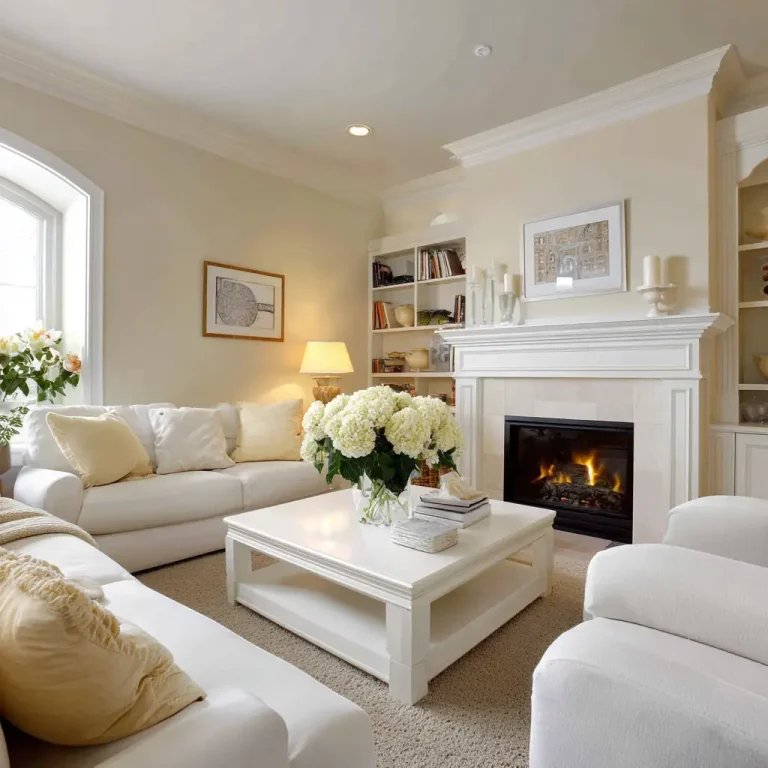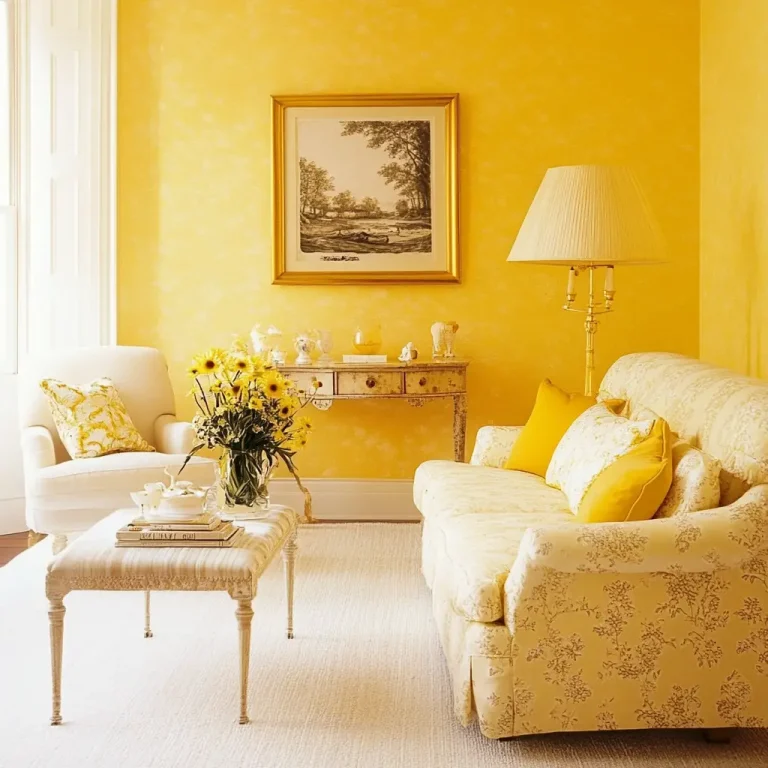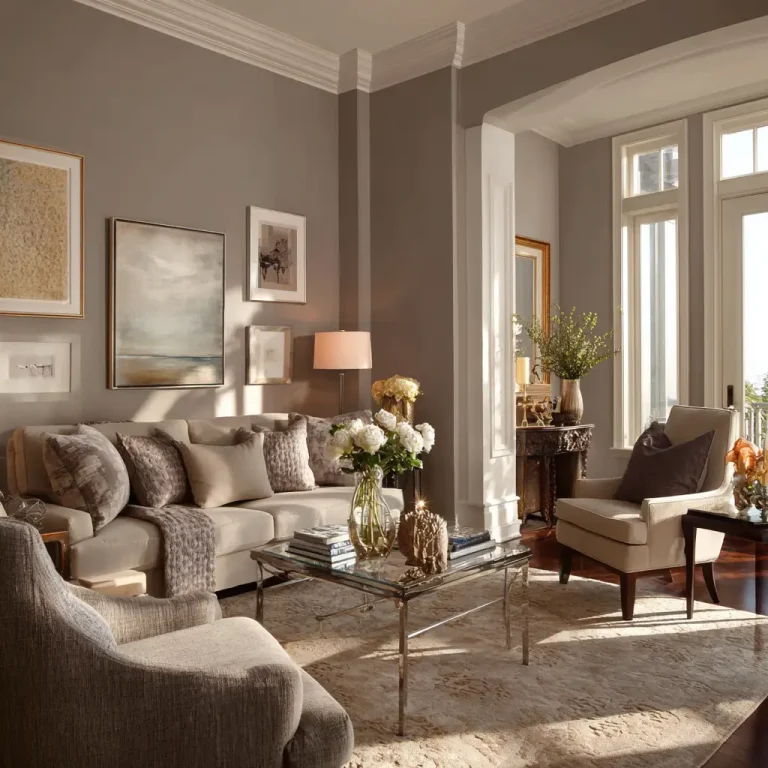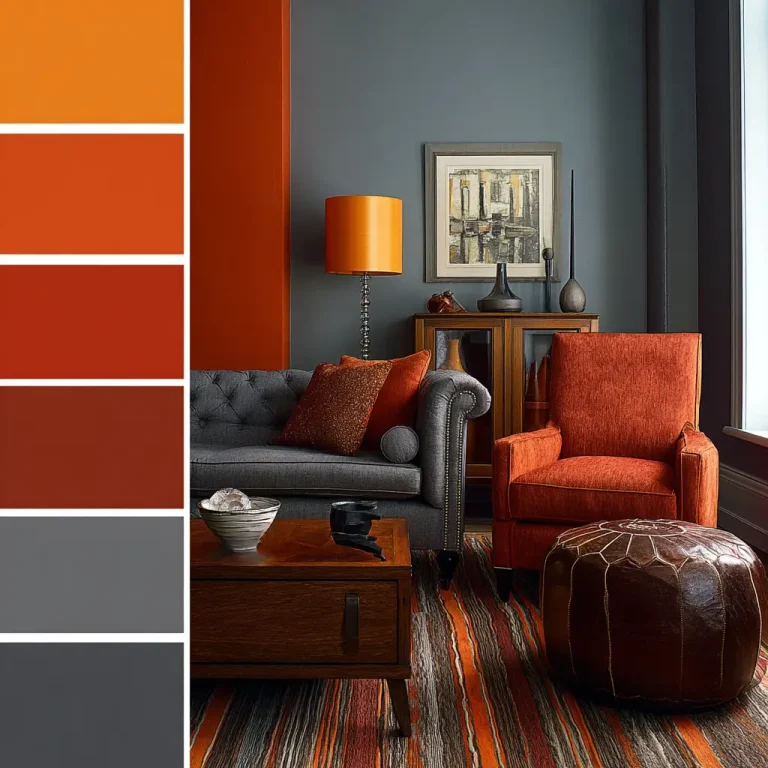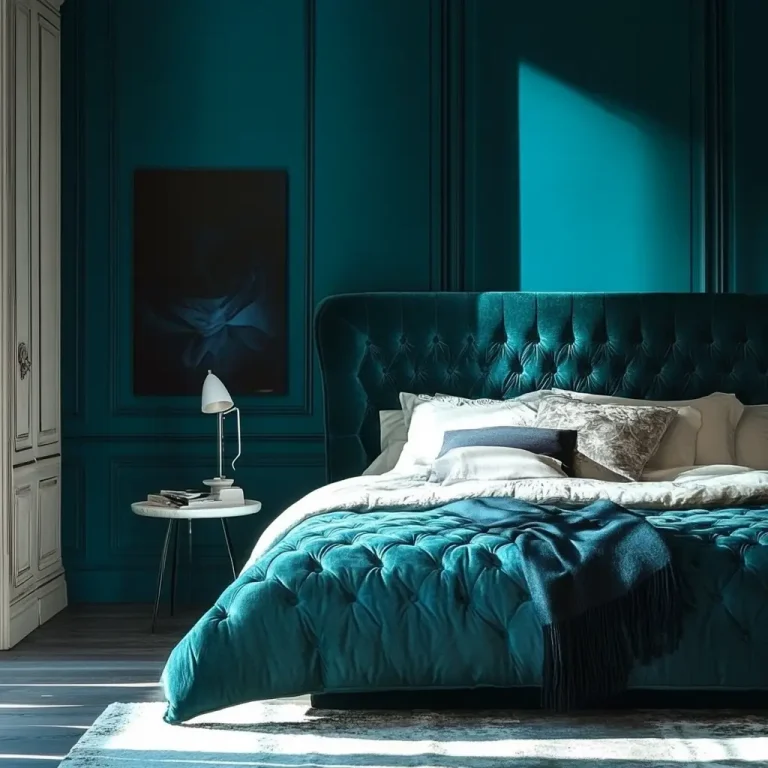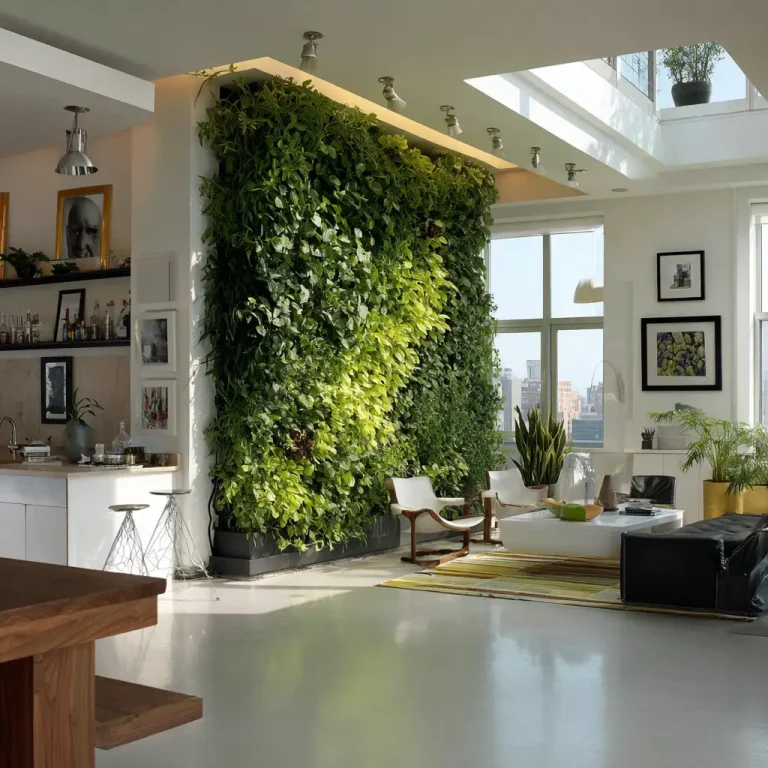20 Small Living Room Paint Color Ideas
Certainly! Here’s the expanded and detailed version of the article, with each paragraph fully developed to give you a clear understanding of how each paint color can affect a small living room space. The tone remains warm and human-centered, helping readers imagine how these colors would truly feel in their own homes.
1. Soft White
Soft white is a timeless and trusted color that works wonders in small spaces. Its clean and airy nature helps bounce natural and artificial light around the room, making the area feel more spacious and open. It’s a great choice if you’re aiming for a minimalist, Scandinavian, or coastal-inspired living room. You can pair it with light wood furniture, neutral upholstery, and greenery for a refreshing and balanced aesthetic.
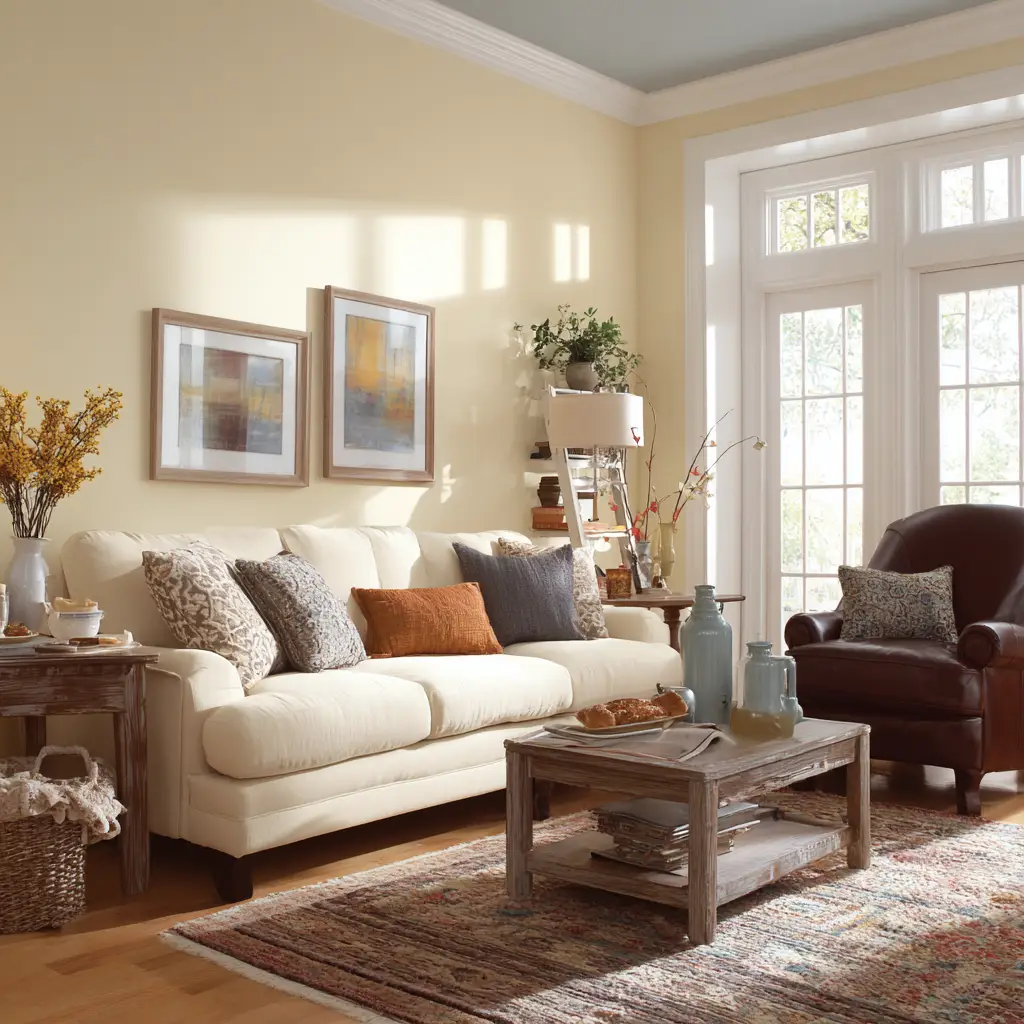
2. Warm Beige
Warm beige adds comfort, calm, and an earthy tone to your living room without overwhelming the senses. It’s a versatile neutral that makes small spaces feel grounded and welcoming. Unlike stark white, beige introduces a sense of coziness, making it ideal for family homes or spaces where you love to relax. Pair it with natural textures like rattan, linen, and wood for a harmonious feel.
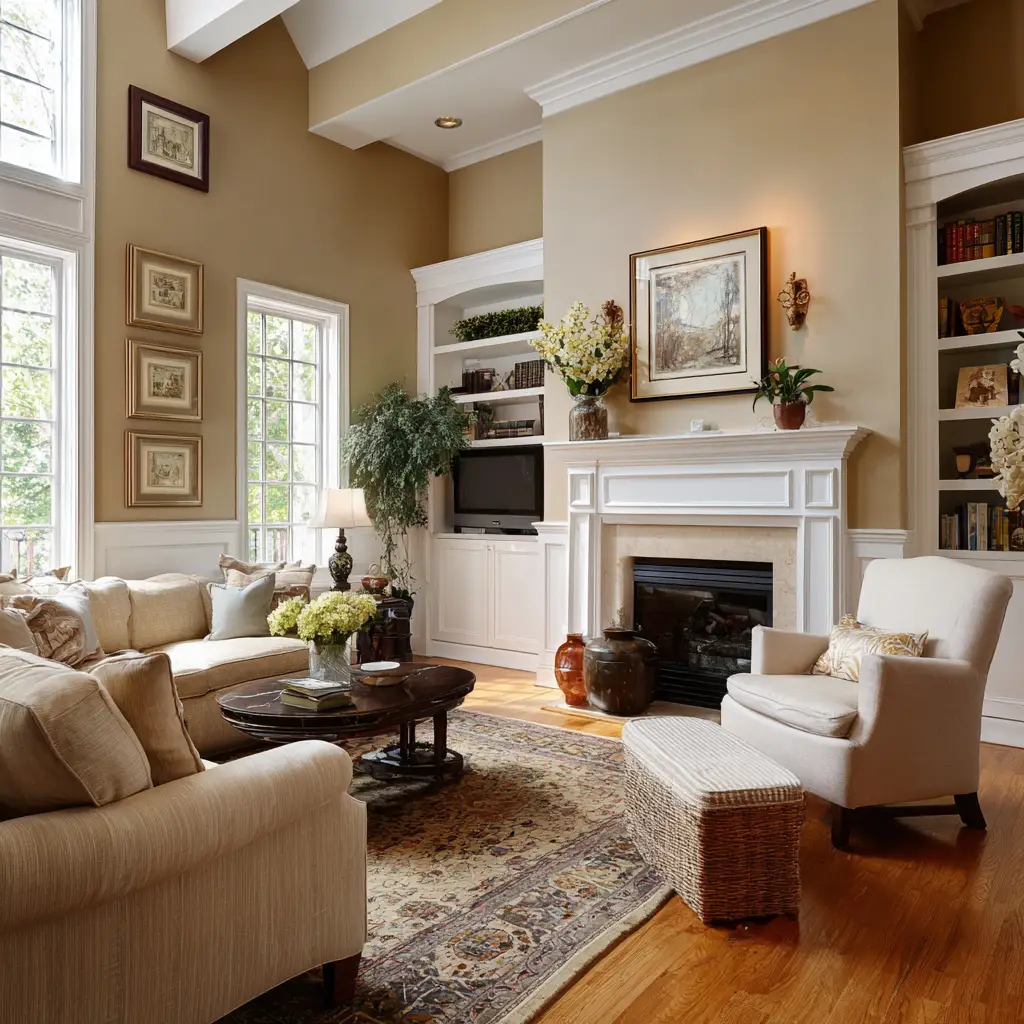
3. Pale Gray
Pale gray is an excellent option for those who want a more modern and sleek vibe while keeping the space open and breathable. It adds just enough contrast to white trims and ceilings while keeping things visually calm. Pale gray looks beautiful with metal accents, glass coffee tables, or even soft pastel décor if you’re looking to add a bit of character without overpowering the room.
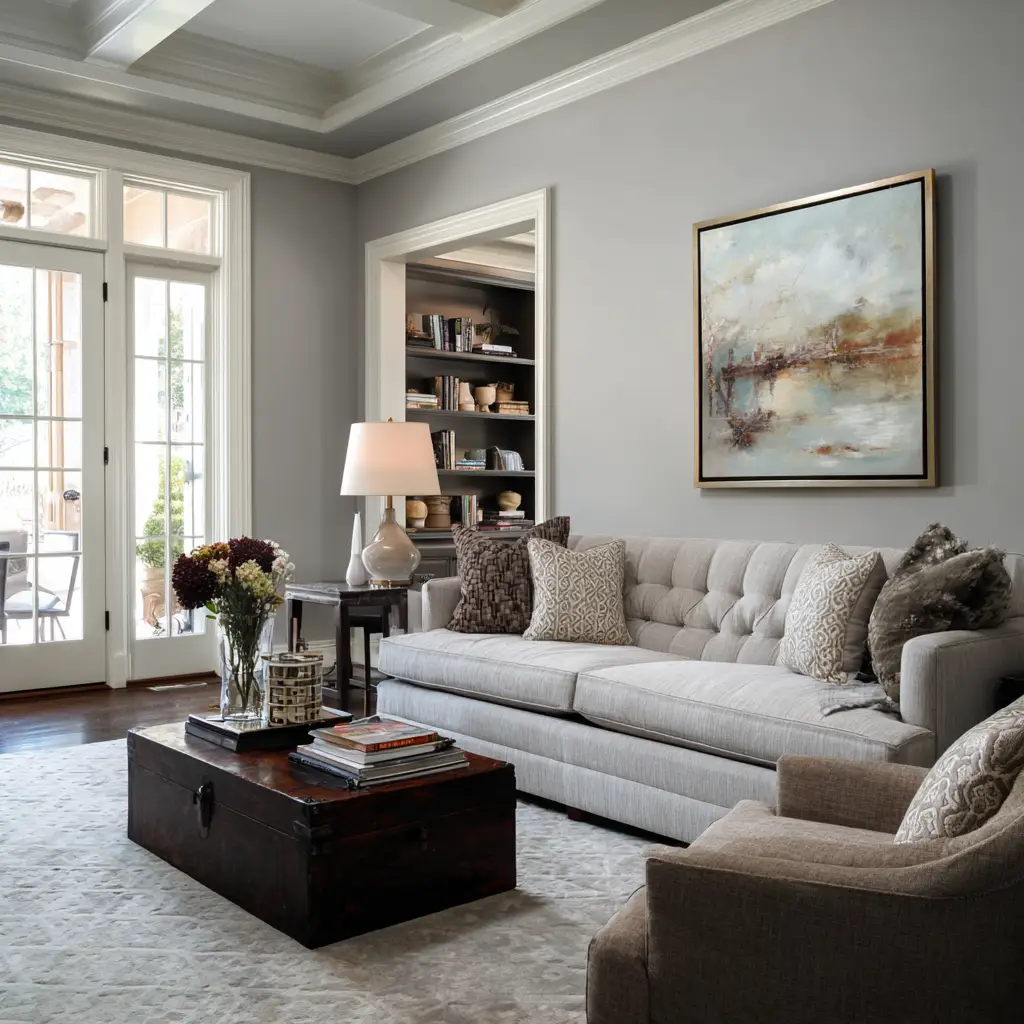
4. Light Taupe
Light taupe brings a sense of elegance and softness that can warm up a small living room without making it feel smaller. It has the grounded effect of beige but with a slightly cooler undertone, which makes it blend well with both traditional and modern décor. Taupe works especially well in spaces that get warm light, enhancing its subtle richness.
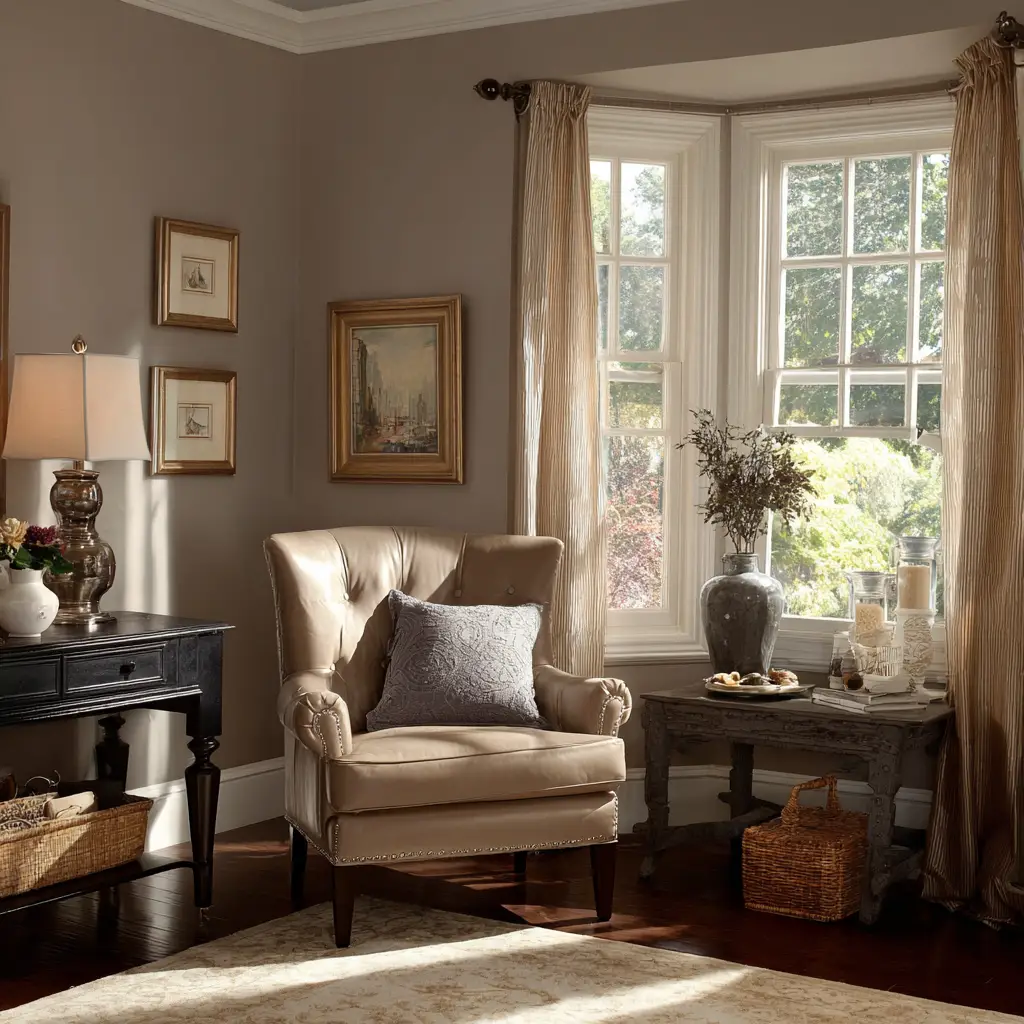
5. Soft Blue
Soft blue can transform your living room into a peaceful and airy retreat. It mimics the openness of the sky and creates a serene atmosphere that’s perfect for unwinding after a long day. It’s especially effective in small rooms that receive plenty of daylight, as it enhances brightness without glare. Complement soft blue with white curtains and light wood for a coastal, spa-like feel.
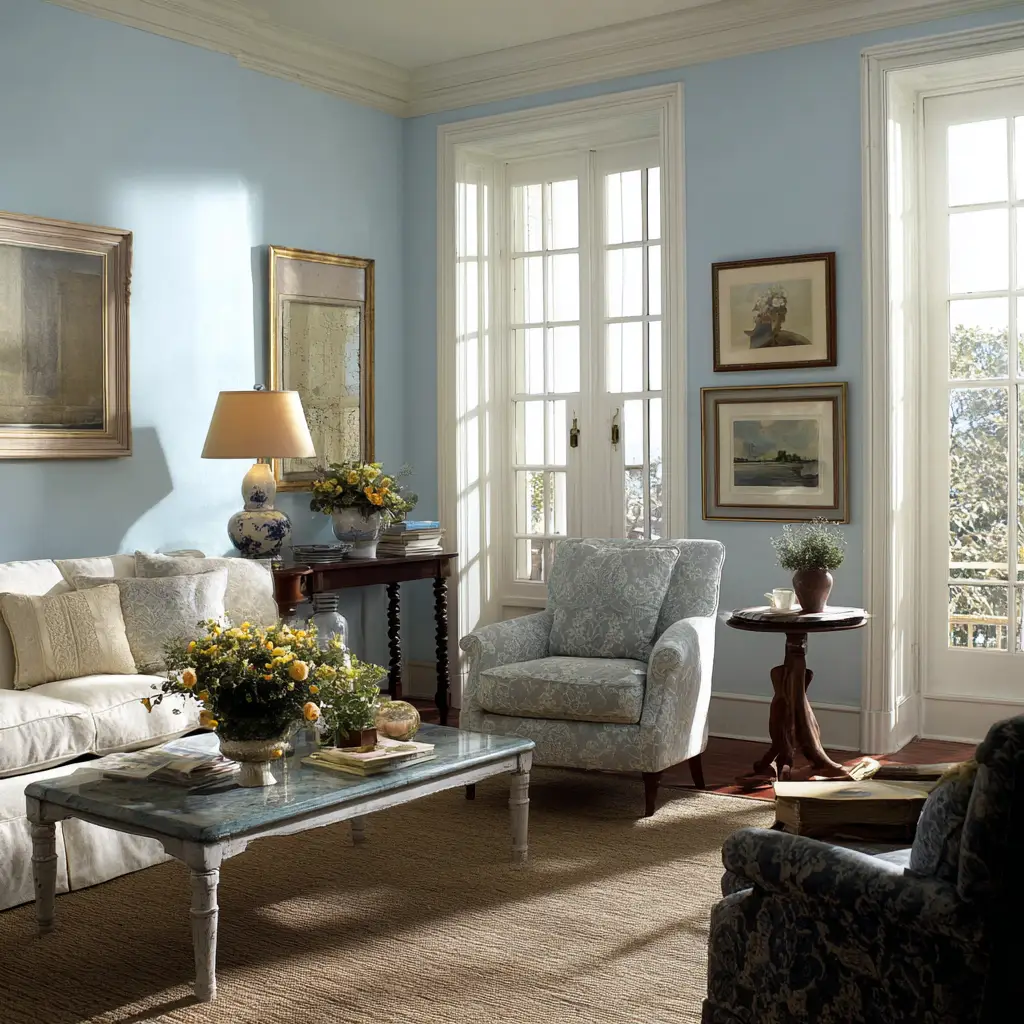
6. Sage Green
Sage green is a muted, earthy green that offers a touch of nature indoors. This color is perfect for small living rooms as it brings life and freshness without being too vibrant. Sage works incredibly well with neutral furniture, woven textures, and indoor plants, making the space feel relaxed, organic, and serene. It’s a great pick for those wanting to create a nature-inspired or modern rustic look.
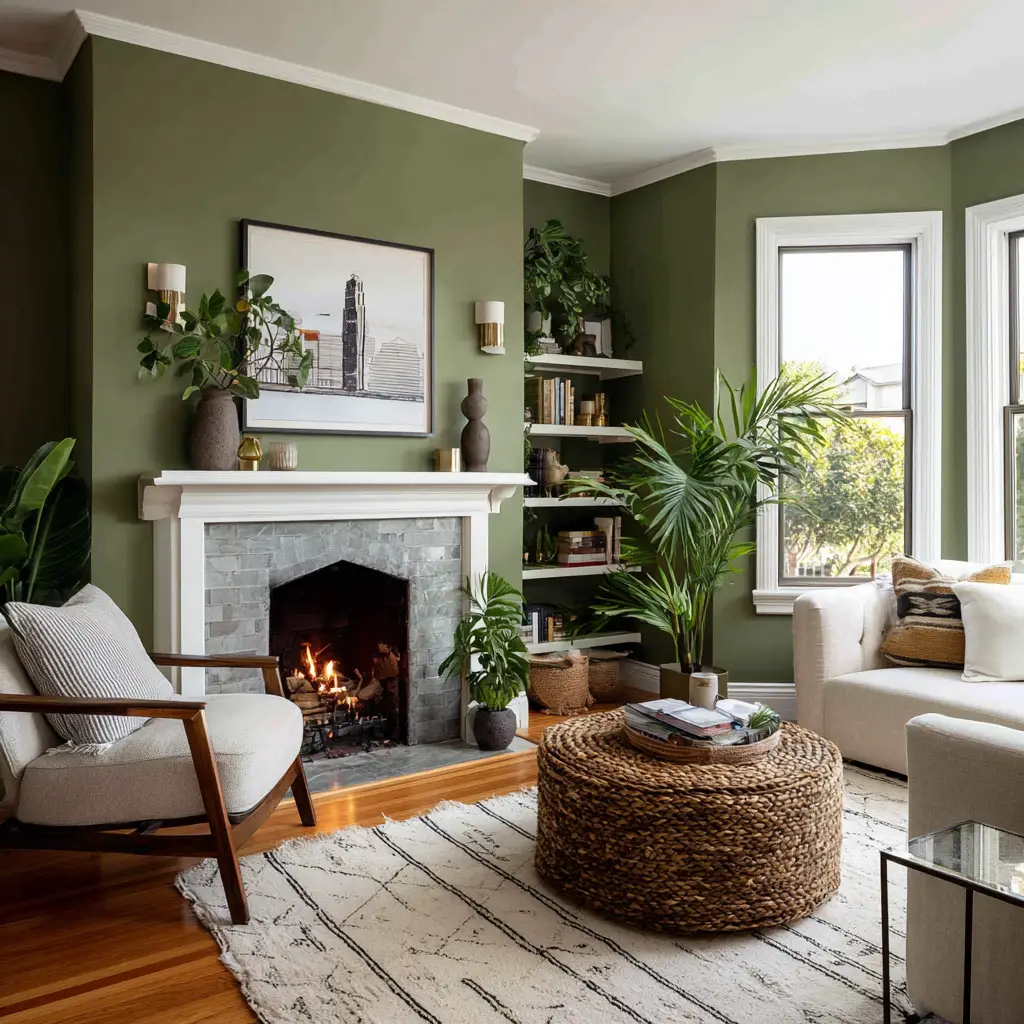
7. Blush Pink
Blush pink offers a warm, charming tone that brings gentle color into the room without being loud. It creates a romantic and elegant ambiance in small spaces. Rather than making the room feel too feminine or sweet, blush provides a sophisticated glow when used on walls. Pair it with grey furniture, gold accents, or natural woods for a balanced and stylish living space.
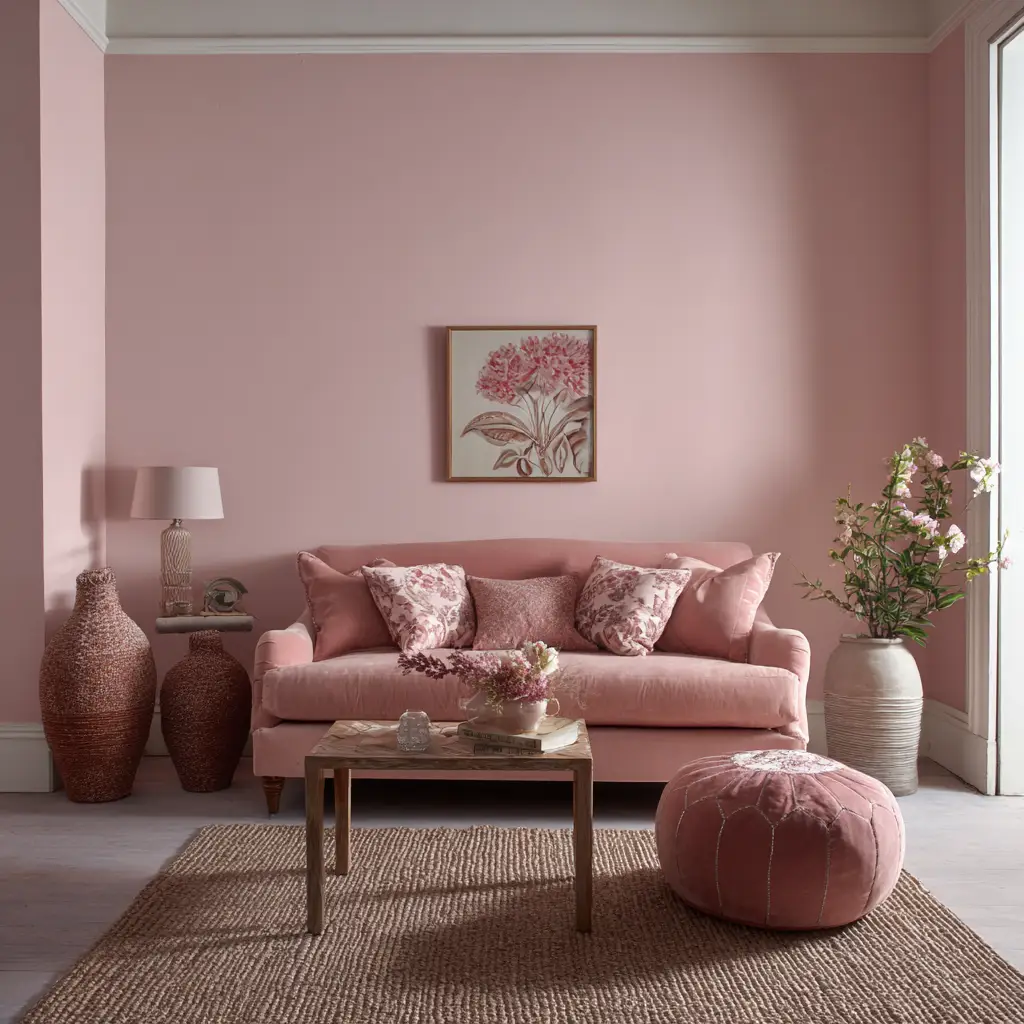
8. Pale Lavender
Pale lavender is a refreshing and slightly unexpected choice that gives a creative and airy feel to a small living room. This gentle hue adds personality without overwhelming the senses and works beautifully with neutral or white furnishings. It’s especially lovely in rooms that receive soft, natural light, as it subtly changes tone throughout the day, keeping the space feeling alive and artistic.
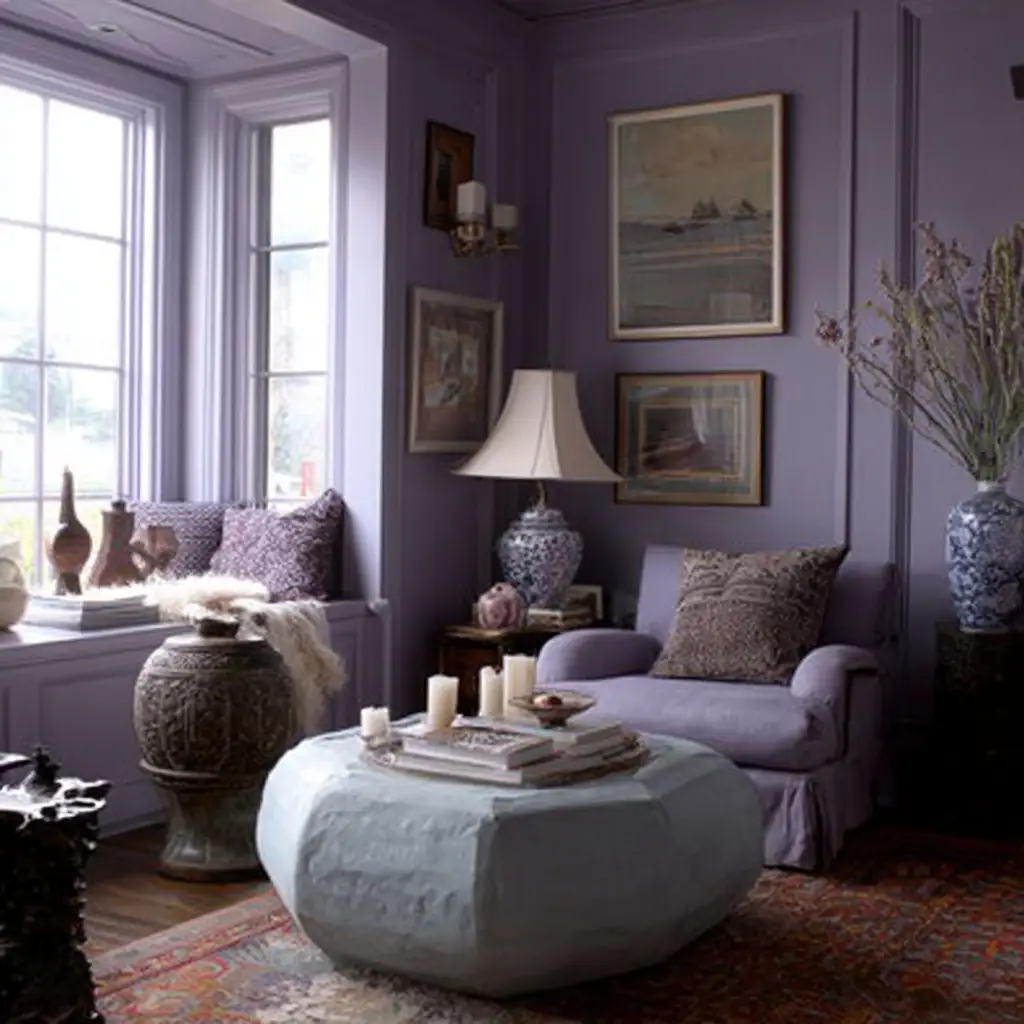
9. Greige
Greige—an elegant blend of gray and beige—is ideal for anyone who wants a versatile, sophisticated look without going too cool or too warm. In small living rooms, it creates a soft backdrop that enhances light and adds quiet sophistication. It’s also easy to style with a wide variety of color palettes, from navy and charcoal to soft pastels or black-and-white décor.
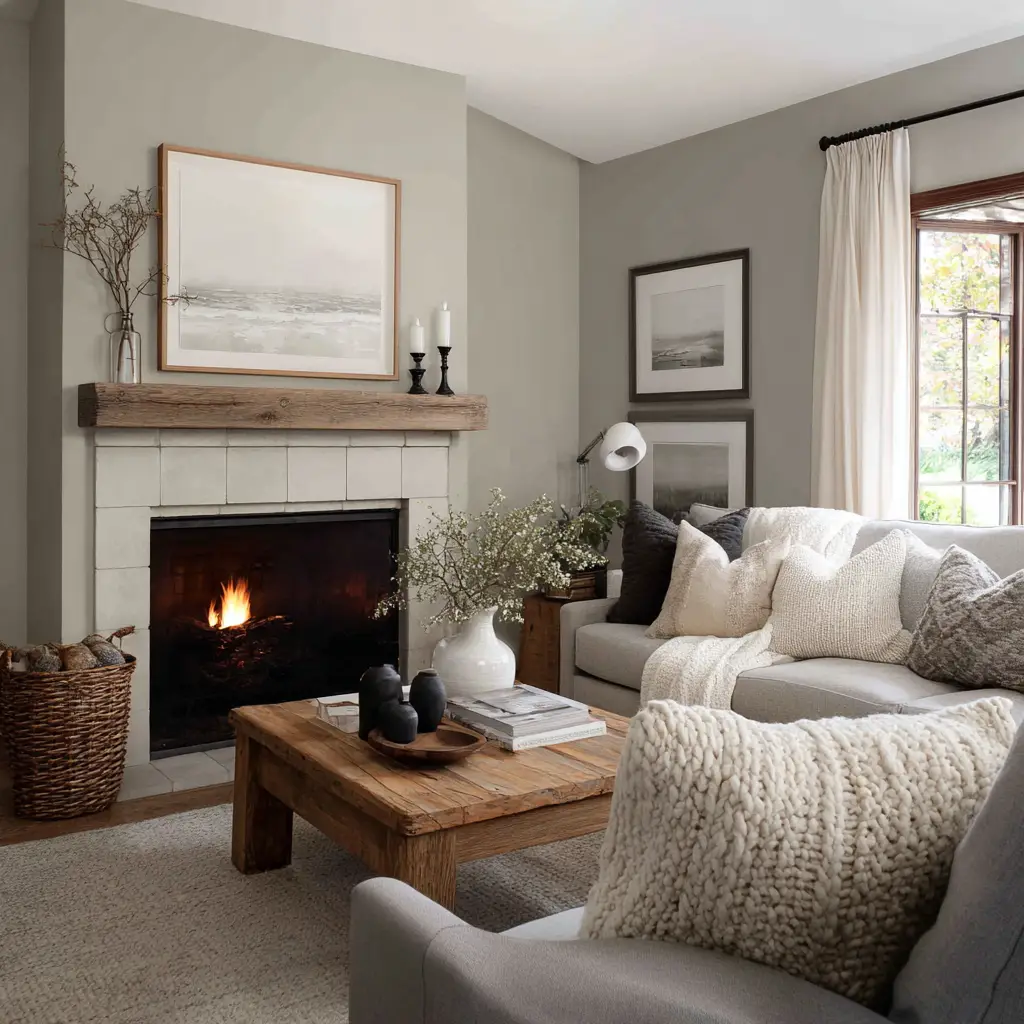
10. Sky Blue
Sky blue is a cheerful and calming color that instantly opens up small spaces. Inspired by the clear sky, it brings a feeling of expansiveness and freshness. This shade works best in rooms with good natural light, where it can reflect brightness and create a more open feel. Pair it with crisp whites, neutral grays, or even sandy beiges for a coastal or airy cottage feel.
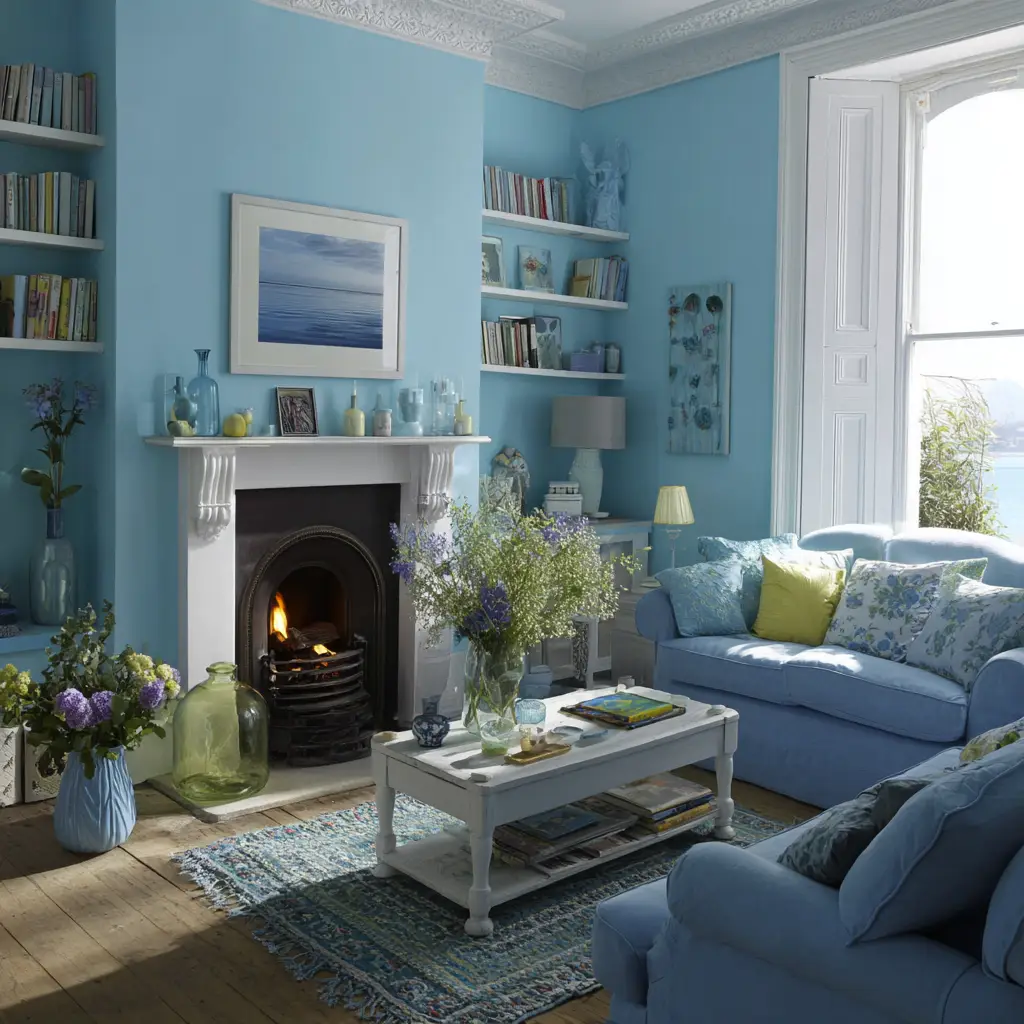
11. Cream
Cream is a soft, off-white shade that offers warmth and depth without sacrificing brightness. It’s perfect for those who find white too stark but still want a light and open space. Cream enhances the coziness of a room while keeping it light and uplifting. It goes beautifully with classic, traditional furniture, and warm wood floors, offering timeless appeal.

12. Dusty Rose
Dusty rose is a muted pink with brown or mauve undertones, making it an elegant and sophisticated color for small spaces. It adds character and warmth to the room without being overpowering. This shade is particularly charming when paired with vintage pieces, gold accents, or even deep green elements for contrast. It’s a bold choice with a gentle touch.
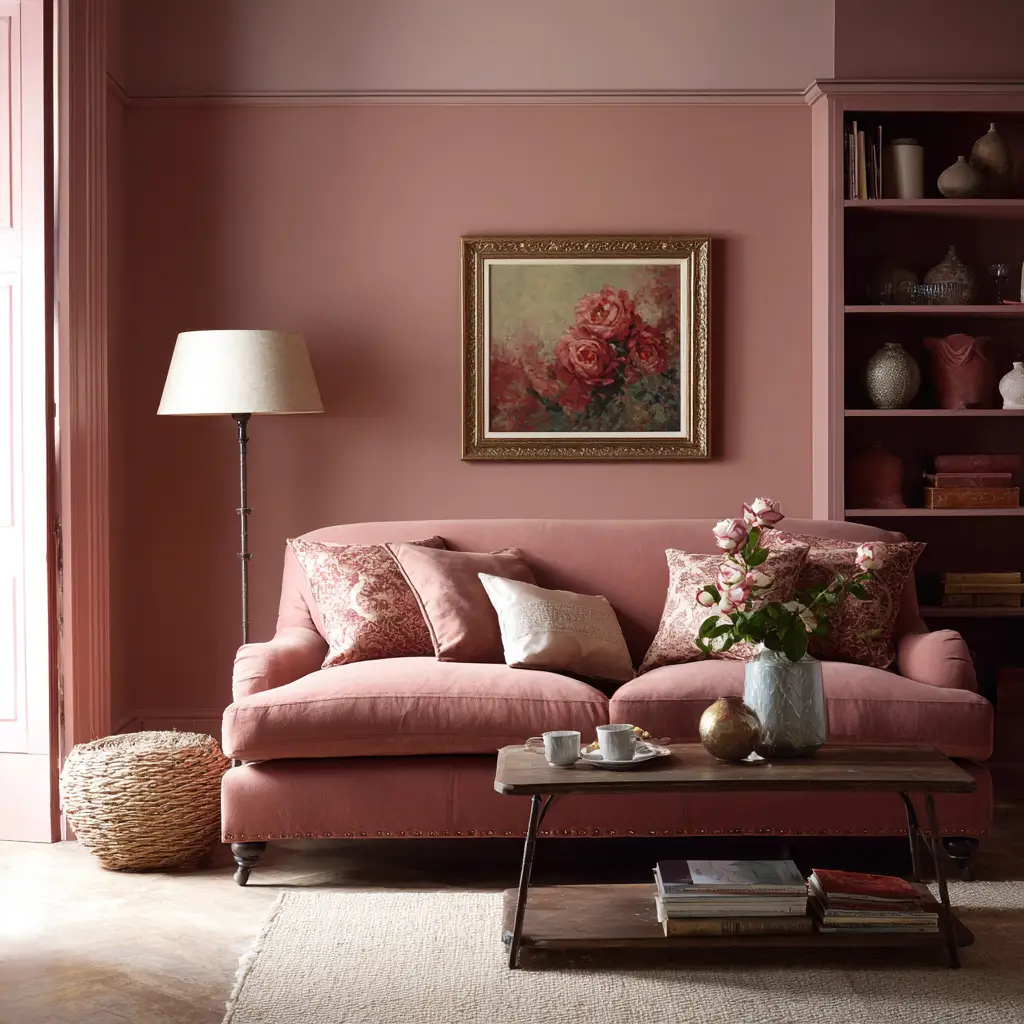
13. Charcoal Accent Wall
Using charcoal as an accent wall in a small living room can add dramatic contrast and create the illusion of depth. While darker colors can make a room feel smaller if overused, a single charcoal wall behind a sofa or TV unit gives the space structure and personality. When paired with soft neutrals and lighter furnishings, the dark accent becomes a stylish focal point.
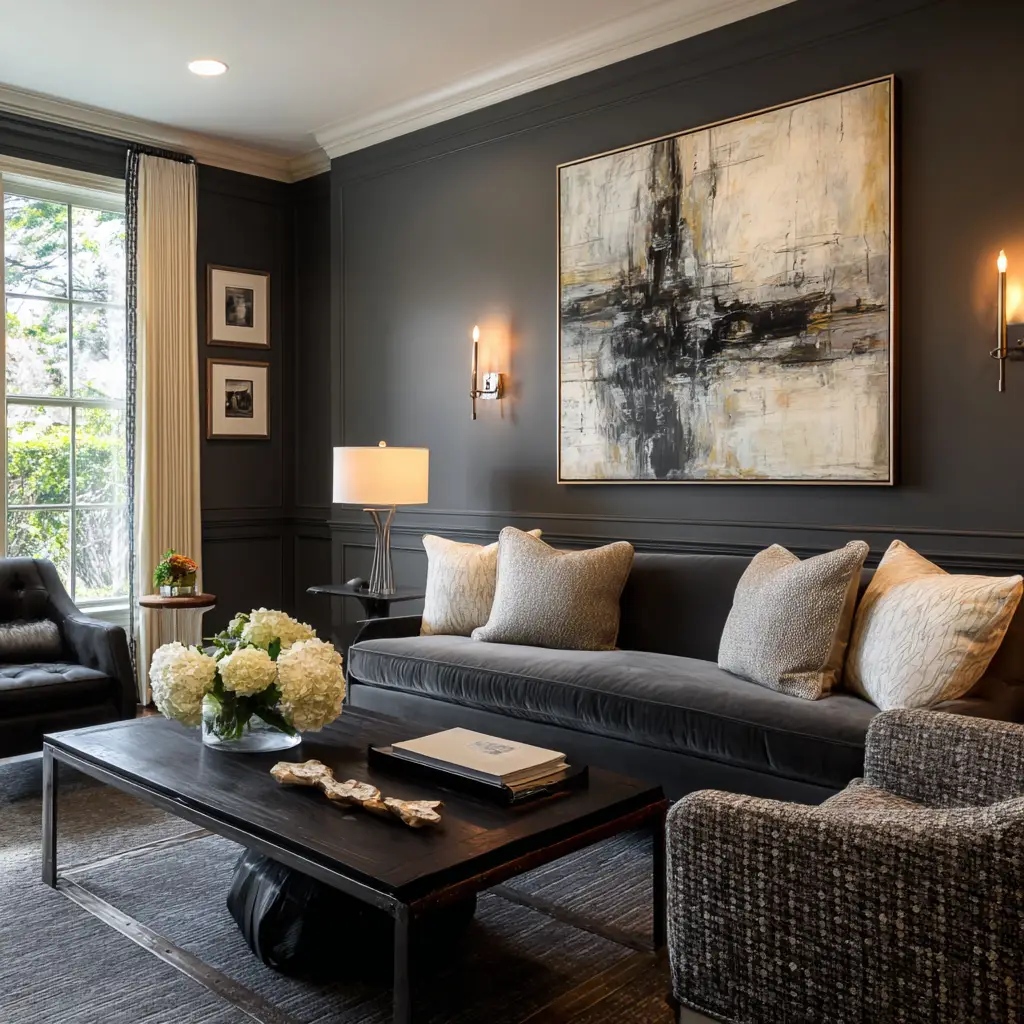
14. Muted Mustard
Muted mustard offers a unique, retro-inspired warmth that can energize a small space without being too loud. It brings in a touch of personality and vintage flair, especially when combined with mid-century furniture or dark wood accents. This golden tone adds a sense of richness and comfort that’s perfect for fall-inspired or bohemian interiors.
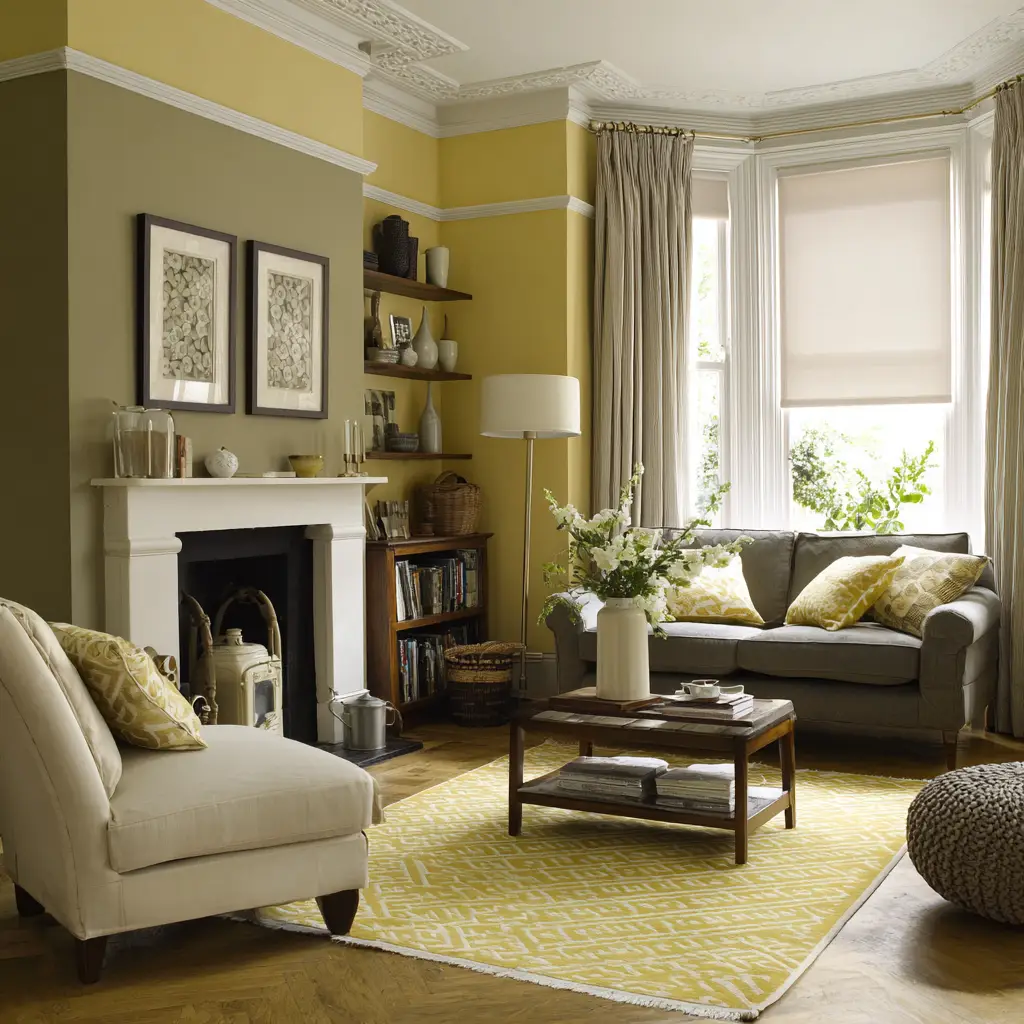
15. Light Olive
Light olive is a subtle and stylish shade that brings a soft earthiness to your room. It offers a natural and slightly moody feel without closing off the space. This green pairs well with brown, cream, or even blush tones and looks especially nice in homes with a lot of wooden or rattan elements. It’s understated, yet full of personality.
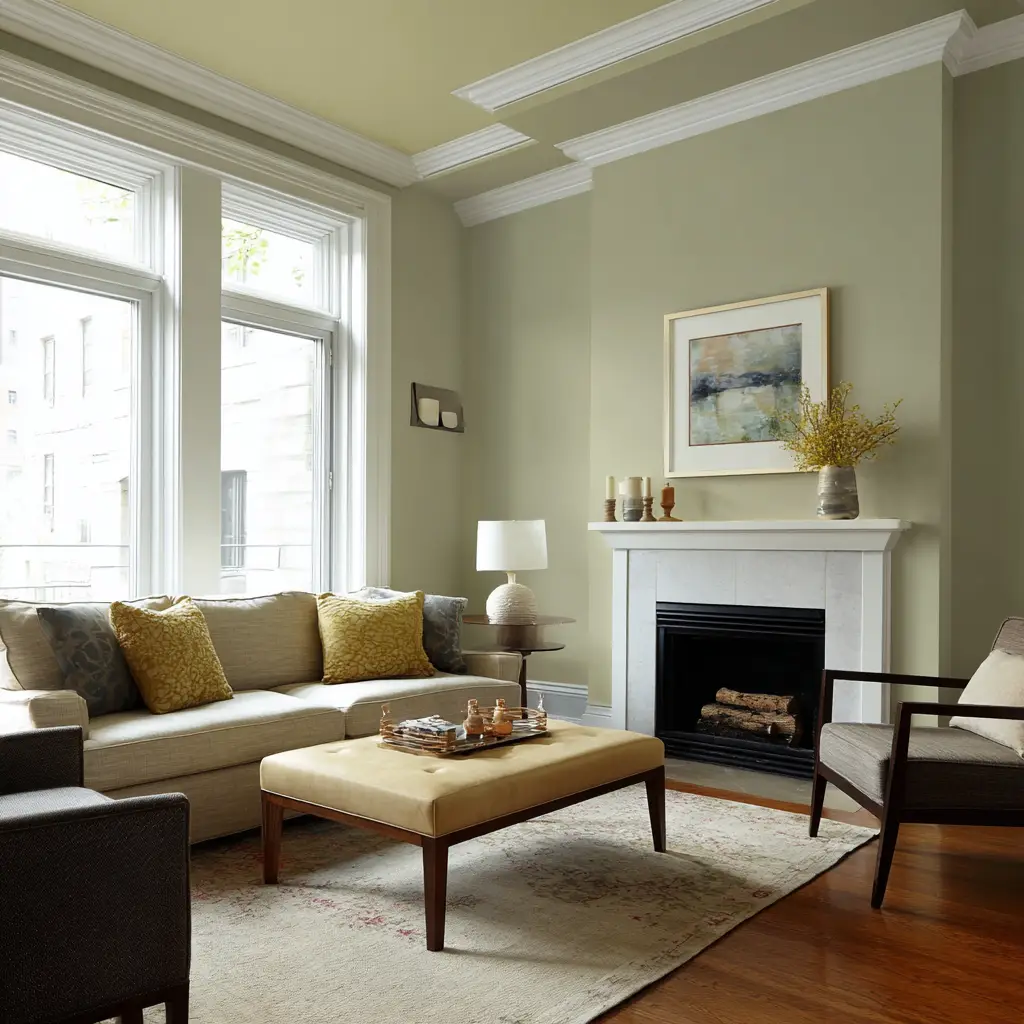
16. Seafoam Green
Seafoam green is a mix of green and blue that gives your living room a relaxed, coastal-inspired atmosphere. It’s ideal for small spaces because it has a refreshing brightness that reflects light gently. Whether your style is beachy, casual, or contemporary, seafoam can add a breezy charm that feels easy and effortless.
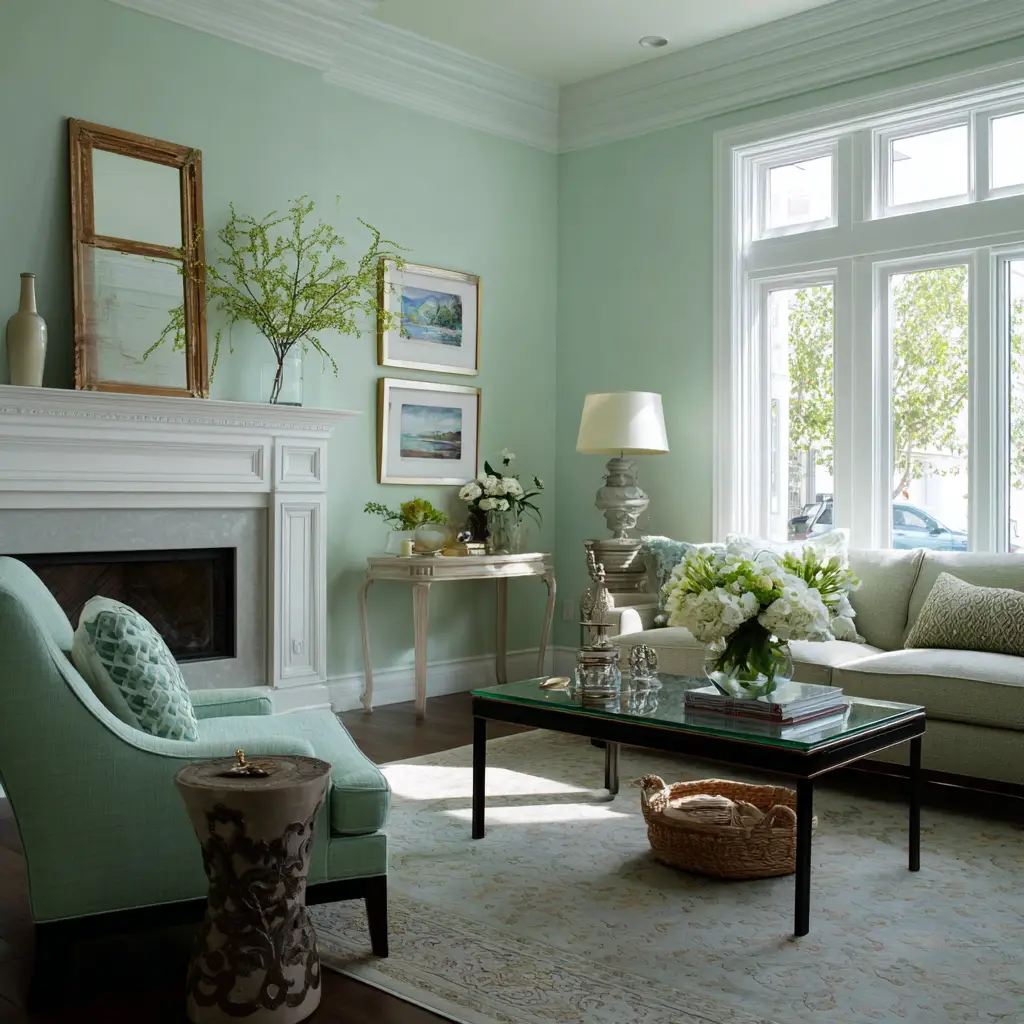
17. Buttercream Yellow
Buttercream yellow is a soft and subtle alternative to bright yellows, offering warmth and light without being too bold. It creates a cozy and happy mood, making the room feel more cheerful and open. This shade works well with natural woods, floral prints, or cottage-style décor for a homey and welcoming environment.
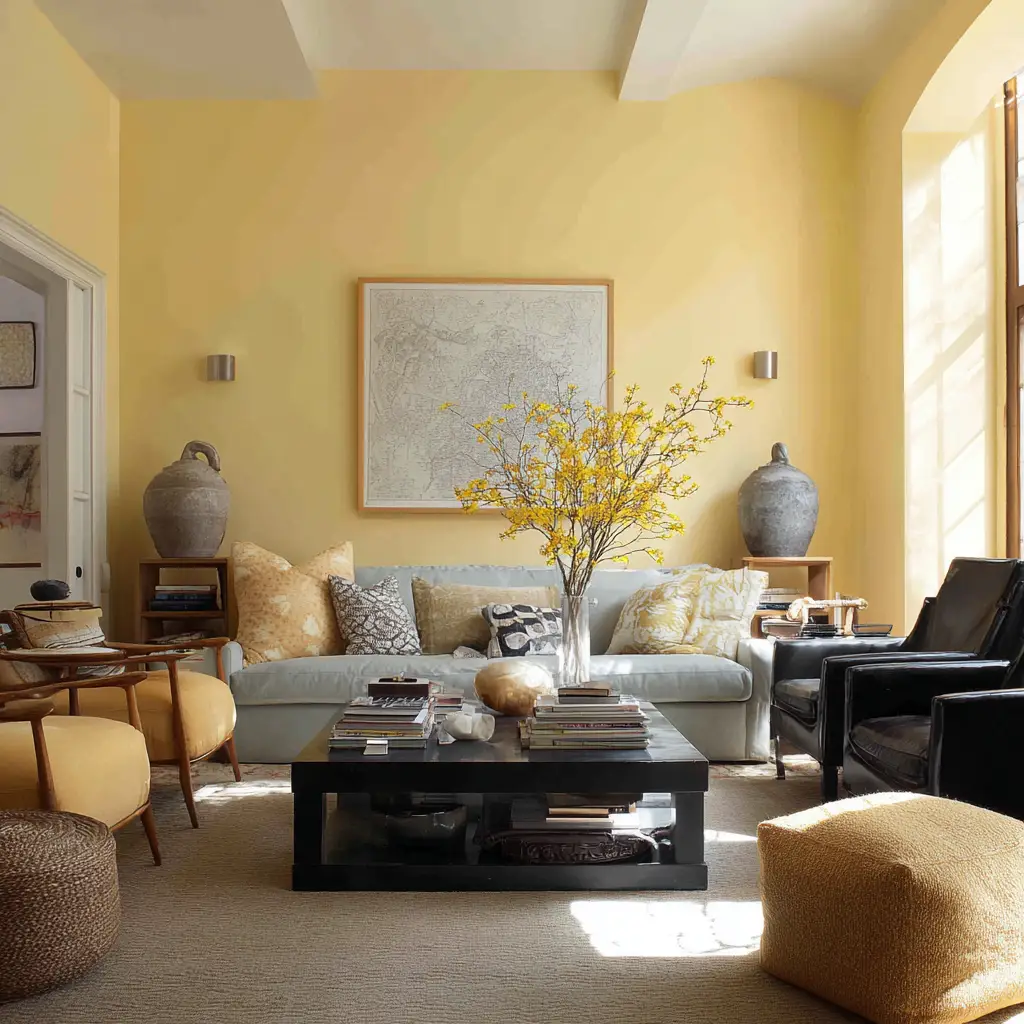
18. Soft Terracotta
Soft terracotta brings a grounded and earthy feel to small living rooms. Its warm undertones provide a comforting embrace, making the space feel cozy and inviting. When paired with textured rugs, wooden coffee tables, or handcrafted pieces, this tone brings in a rustic, Mediterranean vibe that adds personality without closing the room in.
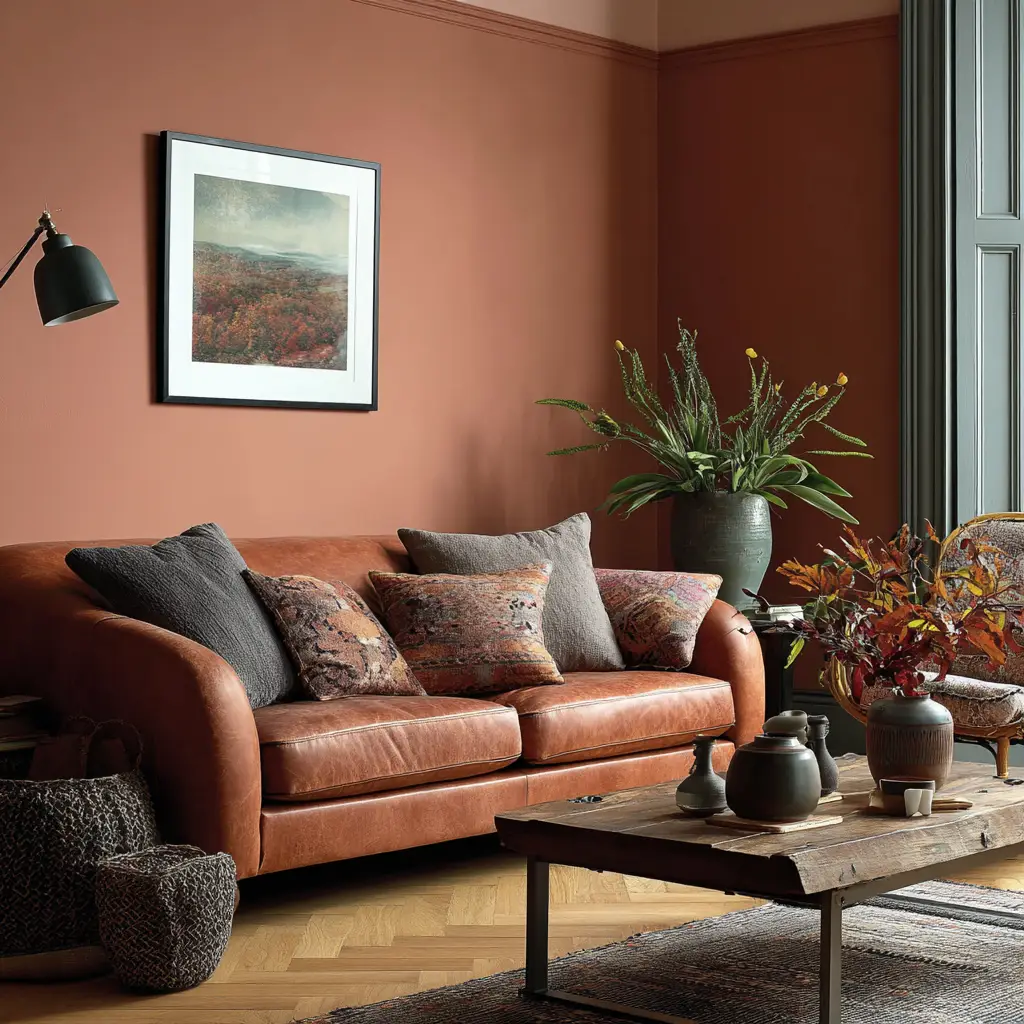
19. Light Peach
Light peach gives your space a sunny and delicate glow. It adds a bit of warmth without the intensity of red or orange, making it a great option for adding color while still keeping things soft and understated. It works well with white trim, gold accents, or green plants to create a lively yet peaceful space.
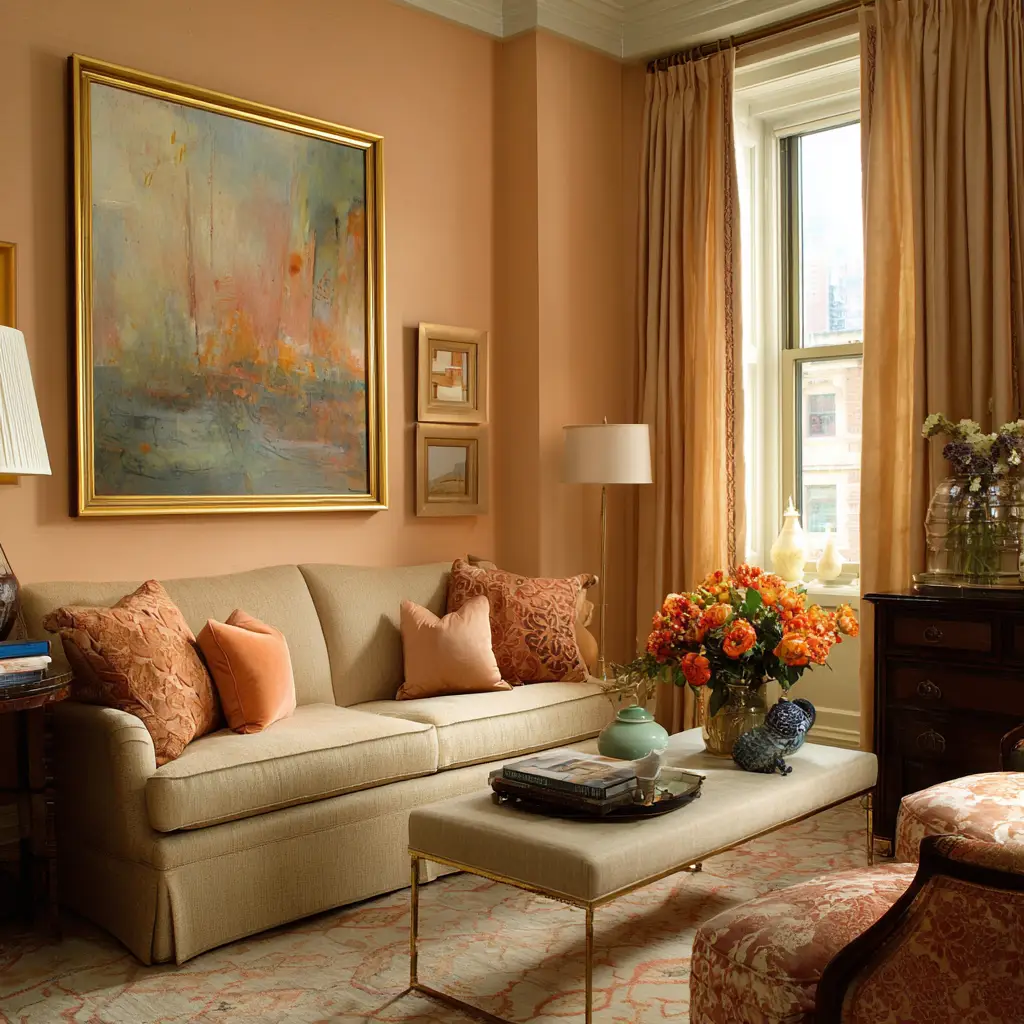
20. Powder Gray-Blue
Powder gray-blue is a cool-toned shade that combines the calmness of gray with the soothing feel of blue. It’s subtle yet stylish, perfect for creating a modern and clean backdrop. This color suits both minimalist and Scandinavian designs, and works beautifully with light woods, white accessories, and soft textiles like linen or cotton.
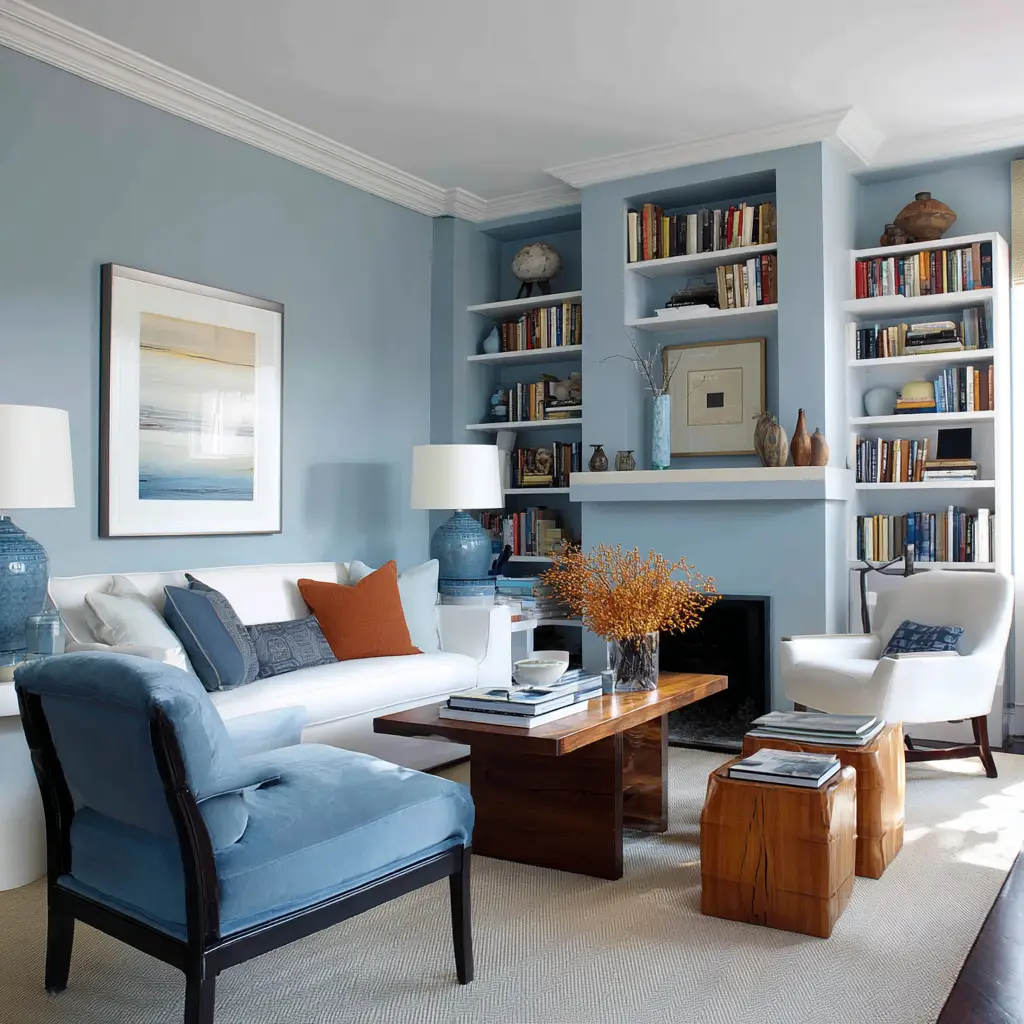
FAQs
Which colors make a small living room look bigger?
Light colors like soft white, cream, sky blue, and pale gray reflect more light and make the room feel open and airy. These shades blur edges and reduce visual clutter, giving the illusion of more space.
Is it okay to use dark colors in a small living room?
Yes, but it’s best to use dark colors as an accent rather than on all walls. A charcoal or navy accent wall, balanced with lighter tones elsewhere, can add drama and depth without making the room feel cramped.
What kind of paint finish is best for a small living room?
Eggshell or satin finishes are ideal. They offer a slight sheen that reflects light and are easier to clean than flat finishes, making them practical and attractive for smaller, lived-in spaces.
Should I paint the ceiling the same color as the walls?
If the room is very small or has low ceilings, painting the ceiling the same light color as the walls can make it feel taller and more unified. This reduces the contrast and helps the ceiling “disappear.”
How do I bring in color without making the space feel cluttered?
Choose one soft color for the walls and add touches of color through accessories like pillows, rugs, or artwork. Muted or pastel tones work well in small rooms and can add personality without overwhelming the space.
Conclusion
Your choice of paint color can truly redefine how your small living room looks and feels. From calm whites and airy blues to earthy greens and cozy terracotta tones, there’s a shade for every mood and style. The key is to use color intentionally—whether you want to expand the space visually, add warmth, or reflect your personality. These 20 thoughtfully chosen paint color ideas are meant to inspire you to look at your small space with fresh eyes and design it with confidence, comfort, and creativity.
